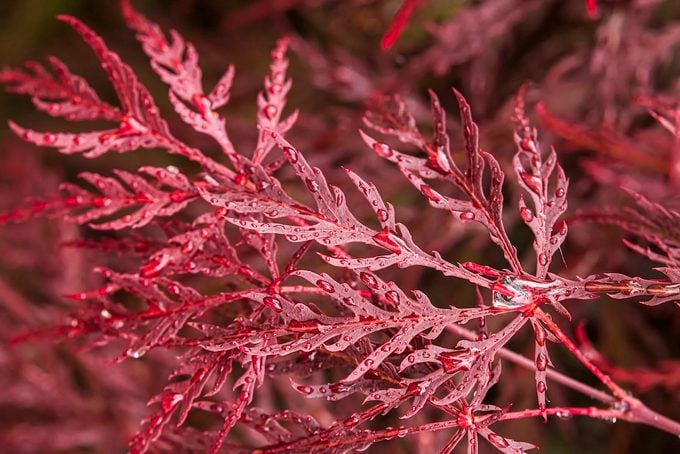Japanese Maple Not Losing Leaves in Fall
 Jojoo64/ShutterstockLaceleaf Japanese maple tree
Jojoo64/ShutterstockLaceleaf Japanese maple tree
“I have a large red laceleaf Japanese maple tree. I noticed that the leaves that dried up over the fall and winter have not fallen off and are still hanging on the branches. Is this normal or is it something I should be concerned about?” asks Birds & Blooms reader Patricia Hash of Forest Hill, Maryland.
Horticultural expert Melinda Myers says, “This can happen to a variety of trees, including Japanese maples. Known as marcescent, the persistent leaves fail to fully develop an abscission layer (separation layer) in fall. These brown leaves persist and eventually fall off during winter or in spring as new leaves emerge. Although the cause is uncertain, there appear to be some benefits. These brown leaves can protect the buds from harsh weather, and ripping them off can damage the winter buds. It is best to let them drop naturally. Some scientists also believe the brown leaves make the buds and twigs less palatable for deer and help reduce the risk of them grazing.”
Fall Tree Leaves Did Not Change Color
“The leaves on our Japanese maple usually turn red before dropping. But last year the leaves turned beige and stayed on the tree all winter. What happened?” asks reader Sherry Lesiak of Powell, Ohio.
Melinda says, “Blame it on the weather. A sudden drop in temperature can prevent the normal process of leaves turning color in autumn and then falling from the tree. Gradual cooling allows the trees to form a barrier, called the abscission layer, between the leaves and twigs, which helps the leaves detach. When we have a warmer than normal fall followed by a sudden or extreme drop in temperature, plants can’t always completely form the abscission layer. The leaves eventually turn brown and remain on the tree.”
About the Expert
Melinda Myers is the official gardening expert for Birds & Blooms. She is a TV/radio host, author and columnist who has written more than 20 gardening books. Melinda earned a master’s degree in horticulture from the University of Wisconsin-Madison.


Comments are closed.